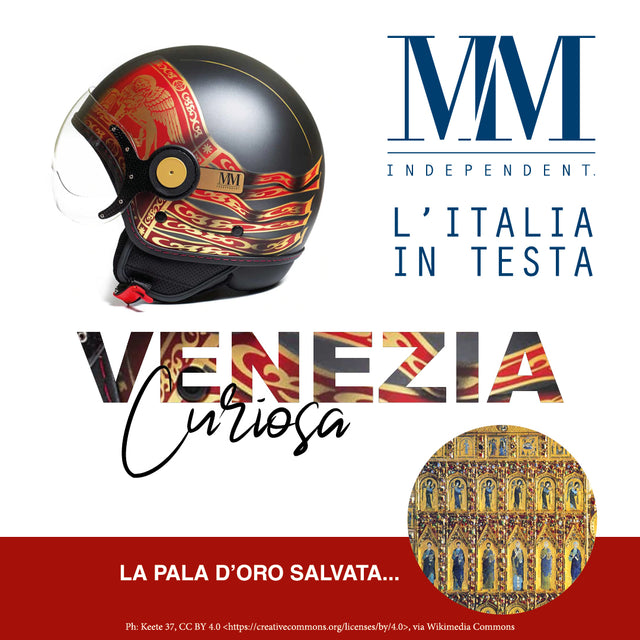Venice, San Marco: the saved gold altarpiece ...
Venice, San Marco: the saved gold altarpiece ...

The Basilica of San Marco hosts the precious golden altarpiece, a majestic Byzantine golden work produced in the 10th century. Its realization requested a technique of artistic nail polish artistic decoration cloisonné.
Cloisonné
<< ... subtle threads (filigree) or strips or small metal partitions (usually copper), cells or alveoli (called in French Cloisons), are welded or glued to a support slab of the work to be built; Subsequently, therefore, in the areas detected by the metal, the nail polish is poured, thus obtaining a sort of mosaic whose cards are limited exactly from the metal strips ... >> (https://it.wikipedia.org/wiki/Cloisonn%C3%A9)
Over time, the Golden Pala is enriched more and more until its completion in the fourteenth century;
The structure, located on the main altar of the basilica, is in the Gothic style in silver and gold and size 334x212cm. On it there are numerous sacred images with the Christ surrounded by the evangelists, the prophets, apostles, archangels and in the frame the life history of San Marco. But the peculiarity that leaves everyone dazzled is the very high quantity of pearls, nail polishes and precious stones that contains:
526 pearls
330 Granates
320 sapphires
300 emeralds
183 Amethyst
75 rubies
175 Agate
34 Topaz
16 Corniole
13 diaspri
… For a total of 1927 gems!
Precisely for this peculiarity, it could be surprised that the altarpiece has come to date without being stolen.
Tradition tells that, in fact, there was a particular historical moment where the Golden Pala was in serious danger:
Napoleon, found in his presence during the invasion, was deceived by an all Venetian linguistic "game" that allowed to save it;
“X and all true!"The Venetians said to the emperor ... without too much thinking that the Italian word"REAL"In the Veneto dialect it also means"GLASS”…
Fortunately, Napoleon understood that the work was all of glass (therefore without value) and left it in his place bringing other precious to France.
Thanks to this qui pro quo dialectal, the Golden Pala was saved, granting us the privilege of being able to admire it again in its beautiful "home" of origin.




We thank the following sources for the information collected and we invite you to a further curious study:
https://it.wikipedia.org/wiki/Pala_d%27oro
https://it.wikipedia.org/wiki/Cloisonn%C3%A9
https://evenice.it/venezia/storie-tradizioni/pala-oro-basilica-san-marco
https://www.hotelarcadia.net/it/exhibition/curiosita-basilica-san-marco/
Photo references:
Golden shovel detail
PH: Prof. Mortel, CC by 2.0 <https://creativecommons.org/licenses/by/2.0>, via Wikimedia Commons
Golden altarpiece
PH: Keete 37, cc by 4.0 <https://creativecommons.org/licenses/by/4.0>, via Wikimedia Commons
Photo Basilica San Marco
Photo 17834546 © Andrés Member / Dreamstime.com
Photo Venice
Photo 60427863 © Rudi1976 / Dreamstime.com

